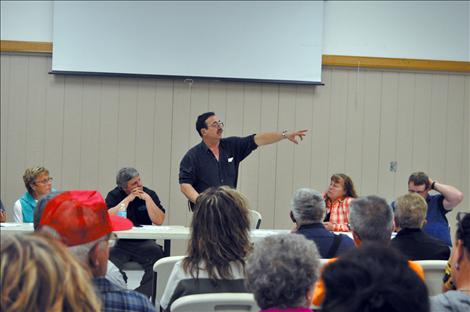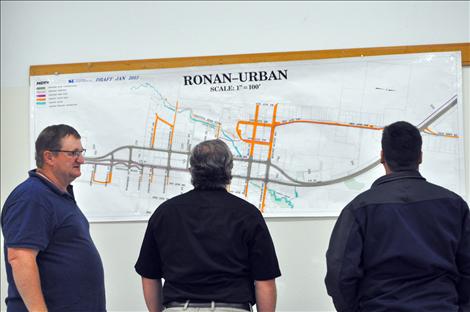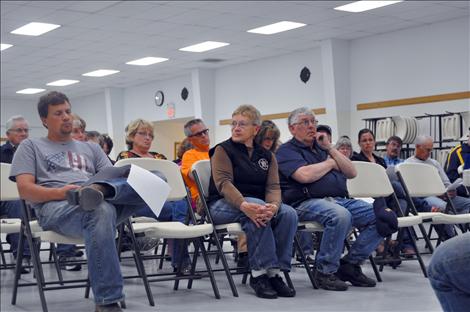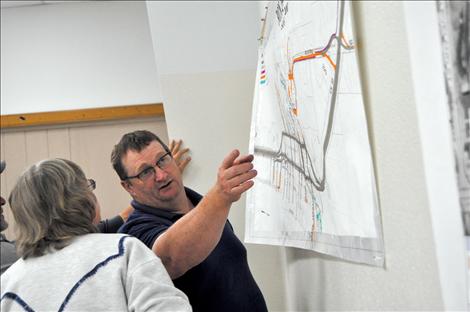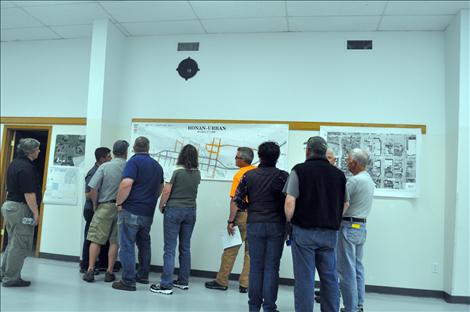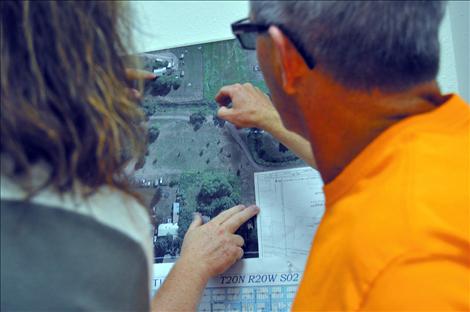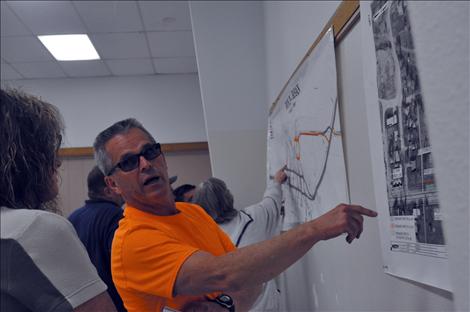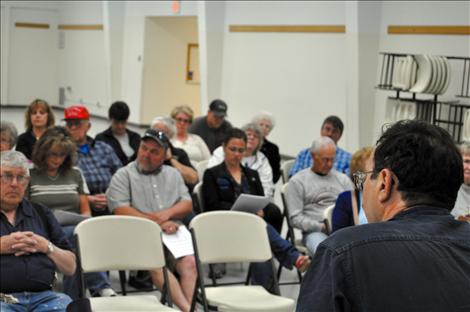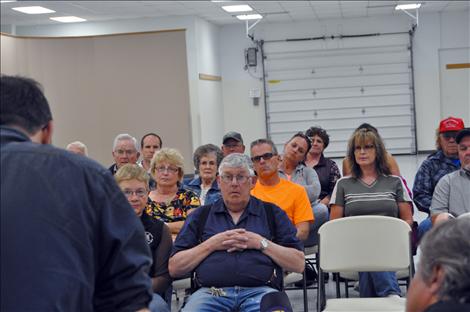Council defends highway plans despite unhappy public response
Hey savvy news reader! Thanks for choosing local.
You are now reading
2 of 3 free articles.
The mayor of Ronan told community members at a public hearing last week that he believes the city’s government has wrangled a pretty sweet deal of improvement projects in exchange for signing off on plans for Highway 93 to expand into land adjacent to Bockman Park. The public in attendance didn’t agree as townspeople and park advocates complained that the city’s officials could try to get more for the town, and be more transparent in the highway expansion.
The concerns came in a last minute hearing before the city council considered signing off on a letter of de minimis Monday. The city has to issue the letter for the expansion of Highway 93 to proceed. The $40 million project is slated to begin construction in 2018 at the earliest, and would enlarge the current two-lane roadway into four lanes. A planned couplet system will situate two northbound lanes where the current roadway is, with the southbound lanes resting where First Avenue currently lies.
The southbound lane’s nearness to Bockman Park entitles the city to mitigation that is finalized by signing off on the letter of de minimis. Improvement suggestions made by town officials and the city’s park board gained little steam until recent months, when federal officials got creative to circumvent federal regulations that would prohibit much of what the city requested.
“I think all in all, we’ve got a pretty good deal,” Mayor Kim Aipperspach said.
As of May 28, much of what the city had asked for had been granted. In an email after the hearing, City Councilmember Roger Romero noted that most of the list of mitigation projects were driven by priorities identified in Bockman Park’s master plan.
These projects include acquisition of additional parking areas, creation of a highway bike path, developing a trail from Garfield Alleyway into the park, connecting existing trails into the highway trail system, acquiring property adjacent to the park, improving storm drain management, construction of a solid barrier along First Avenue, adding flush restrooms and additional park lighting.
But some last minute requests made May 14 by the Ronan Park Board weren’t granted by the Montana Department of Transportation, including construction of a trail to the park restrooms, building a pedestrian bridge across Spring Creek to connect to new parking, providing garbage cans and establishing a $200,000 park maintenance fund. The department also denied the park board’s request to have the Woodlands Play Pod project, an innovative playground project spelled out in the park’s master plan, included in the project.
Former city Parks and Recreation Director Jennifer Rolfsness argued that the city hasn’t done enough for the mitigation.
“This project adversely impacts the city park; number two, the City of Ronan; and number three, anyone that utilizes the city park,” Rolfsness said. “How in doing your due diligence as a city council, how could you guys get on board with a project when they sent a letter back to (the city) saying that they were not going to do any mitigation for the city’s parks?”
The devil’s in the details, Aipperspach and City Public Works Director Dan Miller explained.
For months state and federal highway officials denied the authority to mitigate any park impacts because two environmental impact statements issued in 1996 and 2008 identified a single impact to the park – a barrier along First Avenue. To mitigate outside of the scope of that impact would be impermissible under federal guidelines. Once Ronan made it clear it wouldn’t be handing over a letter of de minimis without getting something in return, mitigation plans were made to get around the rules.
On paper, the state and federal officials will not say that they are mitigating park impacts, but the City’s letter of de minimis will spell out the list of agreed upon conditions of the project. Including the list of demands in the letter of de minimis is unorthodox, Rolfsness noted, but city officials say it is something they want to have as a legal document to hold the state and federal negotiators to their word.
“We’ve been trying very hard – that’s why these last steps have taken six or eight months – we’ve been trying to get in as much as we can,” Aipperspach said.
Rolfsness argued that the city should ask for an additional environmental impact statement since new plans for the park include the taking of a 411 square-yard section of land that was not previously accounted for. When there is a direct taking of park land, official mitigation has to be provided, which could open the door for the more of the park board’s requests to be met, she said.
Miller didn’t think that to be feasible because it would set the project back several years. The taking of the 411-square-yard section is the solution to the only mitigation issue identified in the environmental impact statement. It will provide for a barrier between the park and the highway. The section is located inside the park boundary only because federal officials acquiesced to the pleadings of city officials who wanted to keep the barrier as a safety feature and without losing adjacent parking. The project designers could just as easily move the wall outside of the park, avoid taking of park land, and eliminate the parking spots, Miller explained.
Tracy Morigeau Frank argued that the highway’s impact to the park is much greater than what the federal officials have determined.
“Who’s going to let their children play in the 20 feet closest to the highway?” Frank said.
Miller said that was a valid argument, but that if the city makes it, the process of bringing the highway through will be further delayed.
“They’ll have to start all over again and look at how to get around it, and look at bypasses,” Miller said. “It puts us back at square one.”
That could cost millions of dollars, town officials said.
“Honestly, do you care comparatively to (say) this is your town or what the highway department spends on some work?” Rolfsness said.
Audience members made booing-like noises when Aipperspach responded by saying the town had gained much in negotiations.
There was also much discontent with Aipperspach’s responses when he refused to give an answer as to when a final letter of de minimis would be drafted, and if it would be available for public review and comment before the council voted on it. Aipperspach didn’t give a definitive answer. The issue was listed for discussion at the June 2 council meeting as the Valley Journal went to press.
The indecisive description of how the city plans to proceed prompted Park Board Vice President Mark Nelson to criticize the city’s overall process of having a public hearing.
At first, the city called a public hearing for the park impacts in mid-May without publishing public notice in local newspapers. After complaints from several townspeople, the city voted to advertise the meeting in local newspapers on May 18 and May 25. The public meeting was held on May 25, which didn’t give enough public notice, Nelson argued. There also wasn’t any instruction in the public notices on where people could send written comments, Nelson said.
Nelson said the city didn’t meet the requirements of having a transparent government and equated the city’s work on the letter of de minimus to something done with “spit and a handshake.”
Aipperspach admitted the city is not “super-great” at following public notice laws and gave no further insight as to how the public will be involved as the highway plans move forward, save that decisions would be decided in council meetings. He also said that local businesses owners should have a voice when the access plan for the new roadway is being developed.
Those answers didn’t satisfy some in attendance.
“I don’t feel like we’re being asked ‘What do we want?’” Ronna Walchuk said. “I feel like we’re being told that this is what we’re getting.”















